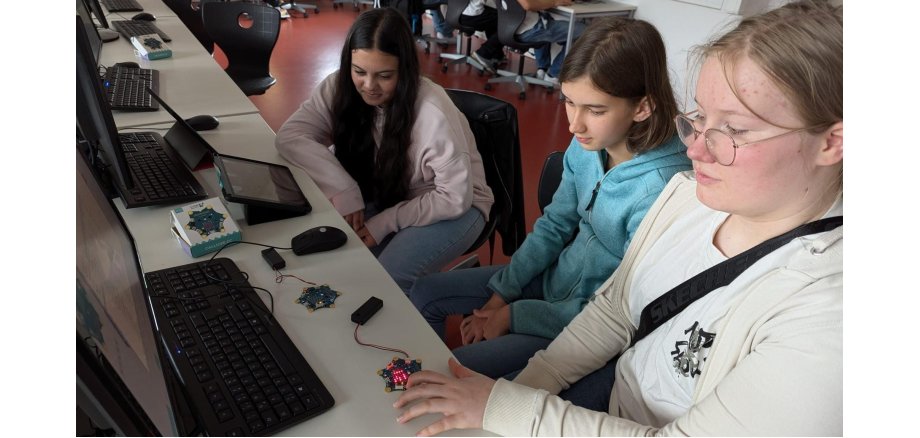As part of an educational project, students from the compulsory elective computer science class took an in-depth look at computer science and climate change in a teaching unit. The aim was to show how digital solutions can help protect against natural disasters.
In the end, the students had the task of selecting an early warning system, sketching it, programming it and presenting it. Impressive projects were created that demonstrated creativity and technical understanding.
One group developed an early warning system for earthquakes. They used two Calliopes, small programmable computers that can communicate. As soon as one Calliope registered an earthquake, it sent a warning signal to the other Calliope, which acted as a receiving station. This system was designed to warn of earthquakes in real time.
Another group developed an early warning system for various natural disasters. Their system sounded the alarm in the event of a sudden rise in temperature, which could indicate a fire, and reacted to vibrations similar to an earthquake. When activated, another device was notified, which reported back the confirmation of receipt.
The students had a lot of fun and learned a lot about natural disasters, early warning systems and the role of computer science. "It was exciting to see how we can use computer science to develop something useful against natural disasters," reported student C.v.E. enthusiastically.
The"Coding for Climate Action" project impressively demonstrated how young people can be made aware of the challenges of climate change and inspired for the world of computer science through practical lessons. Such educational initiatives lay an important foundation for preparing the next generation for technological and ecological challenges.

